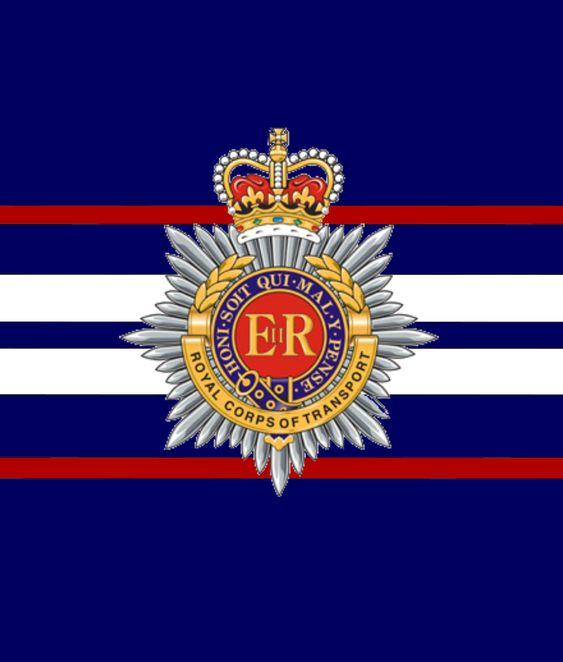History of the Royal Army Service Corps and Royal Corps of Transport
For centuries, army transport was operated by contracted civilians. The first uniformed transport corps in the British Army was the Royal Waggoners formed in 1794. It was not a success and was disbanded the following year. In 1799, the Royal Waggon Corps was formed; by August 1802, it had been renamed the Royal Waggon Train. This was reduced to only two troops in 1818 and finally disbanded in 1833. A transport corps was not formed again until the Crimean War. In 1855, the Land Transport Corps was formed. This was renamed the Military Train the following year. In 1869, there was a major reorganisation of army supply and transport capabilities. Before 1869, supply duties had been the responsibility of the Commissariat, a uniformed civilian body. In 1869, the commissaries of the Commissariat and the officers of the Military Train amalgamated into the Control Department under a Controller-in-Chief. The following year the other ranks of the Military Train were re designated the Army Service Corps (ASC), officered by the Control Department. In 1870 the control department was absorbed into a new Department of the Surveyor General of the Ordnance and the former post of Controller-in-Chief was abolished
The Department of the Surveyor General of the Ordnance retained the Control Department and further structured into four new divisions superintended by a director; the first was the Supply and Transport Division formed from the merging of the former commissariat, purveyors and barrack departments, the second was an Artillery and Stores Division that absorbed the former contracts, clothing, ordnance and stores departments and the third was a Contracts Division. The fourth division created was called the Control Establishments Subdivision that became responsible for the administration of the control departments staff.
In November 1875, the Control Department was abolished and its work in regard to field service was allocated to two new departments the Commissariat and Transport Department and the Ordnance Store Department (which later developed into the Royal Army Ordnance Corps). These two departments remained part of the department of Surveyor General of the Ordnance. In 1878 the Control Establishments Subdivision’s name was altered to the Commissariat and Transport Establishments Division under the supervision of a Commissary General.

In January 1880, the Commissariat and Transport Department was renamed the Commissariat and Transport Staff and the Army Service Corps was renamed the Commissariat and Transport Corps. Finally, in December 1888, these two bodies amalgamated with the War Department Fleet to form a new Army Service Corps, and for the first time officers and other ranks served in a single unified organisation.
In 1887 Department of the Surveyor General of the Ordnance and its head was abolished; its former functions were then distributed among the several divisions of the Military and Civil Departments: the work of the Supply and Transport Division was allocated to the Quartermaster General’s Division.
The ASC subsequently absorbed some transport elements of the Royal Engineers. In 1918, the corps received the “Royal” prefix for its service in the First World War and became the Royal Army Service Corps. It was divided into Transport and Supply Branches.
Before the Second World War, RASC recruits were required to be at least 5 feet 2 inches tall and could enlist up to 30 years of age (or 35 for tradesmen in the Transport Branch). They initially enlisted for six years with the colours and a further six years with the reserve (seven years and five years for tradesmen and clerks, three years and nine years for butchers, bakers and supply issuers). They trained at Aldershot.
Alone among the “Services” (i.e. rear echelon support corps), RASC personnel were considered to be combatant personnel.

In 1965, the RASC was merged with the Transportation and Movement Control Service of the Royal Engineers (which was responsible for railway transport, inland water transport, port operations, and movements) to form the Royal Corps of Transport. All its supply functions,(including the supply of vehicles, their care and preservation in storage and delivery), along with the staff clerks, were transferred to the Royal Army Ordnance Corps, leaving the new RCT solely responsible for transport and movements. In 1993, the RCT and RAOC were merged to form the Royal Logistic Corps, the modern descendant of the ASC.
RCT
This was formed in 1965 from the transport (land, water and air) elements of the Royal Army Service Corps (RASC) and the movement control element of the Royal Engineers (RE). The Royal Army Service Corps’ functions of supply and transport were separated. The RCT became responsible for transport whilst supplies became the responsibility of the Royal Army Ordnance Corps. In 1993, following the Options for Change review, the Royal Logistic Corps (RLC) was formed by the amalgamation of The Royal Corps of Transport, the Royal Army Ordnance Corps, the Royal Pioneer Corps, the Army Catering Corps, and the Postal and Courier elements of the Royal Engineers.
[sic] wiki 2020
